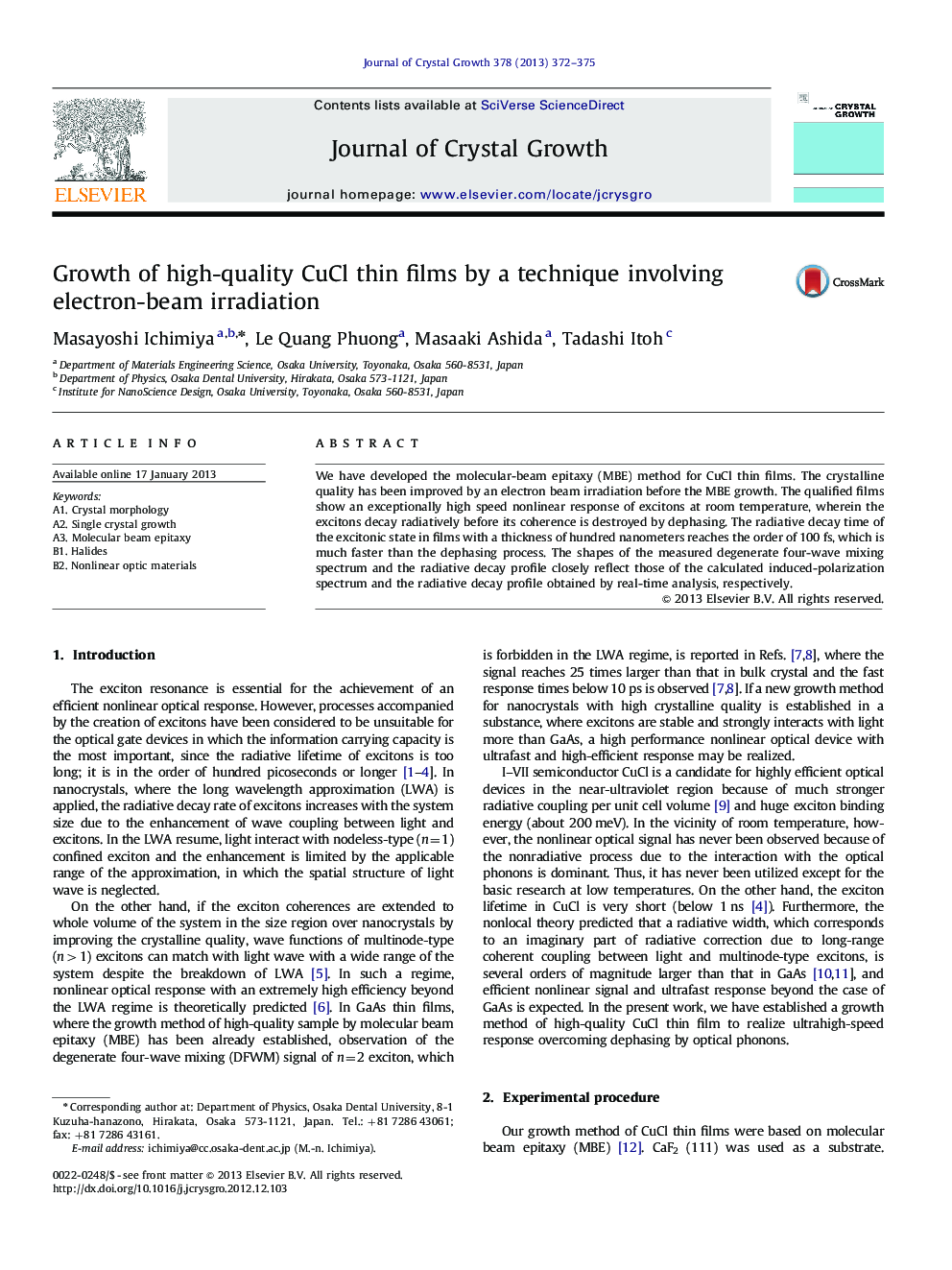| Article ID | Journal | Published Year | Pages | File Type |
|---|---|---|---|---|
| 1790852 | Journal of Crystal Growth | 2013 | 4 Pages |
We have developed the molecular-beam epitaxy (MBE) method for CuCl thin films. The crystalline quality has been improved by an electron beam irradiation before the MBE growth. The qualified films show an exceptionally high speed nonlinear response of excitons at room temperature, wherein the excitons decay radiatively before its coherence is destroyed by dephasing. The radiative decay time of the excitonic state in films with a thickness of hundred nanometers reaches the order of 100 fs, which is much faster than the dephasing process. The shapes of the measured degenerate four-wave mixing spectrum and the radiative decay profile closely reflect those of the calculated induced-polarization spectrum and the radiative decay profile obtained by real-time analysis, respectively.
► We have developed molecular-beam epitaxy method for CuCl thin films. ► The crystalline quality has been improved by an electron beam irradiation before the MBE growth. ► The qualified films show an exceptionally high speed nonlinear response of excitons. ► The radiative decay time of the excitonic state in qualified films reaches the order of 100 fs.
